On a recent Tuesday afternoon, seated outside on rows of bleachers, a handful of students took several leaps of trust in us, themselves, and the natural world. Bottles of pungent sodas were popped and weeds were seasoned, blended, and fried, all with an air of cautious optimism.
“Oh! That’s actually kind of good!”
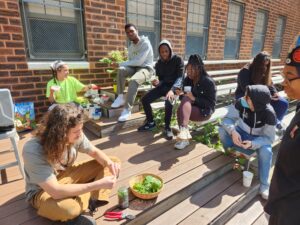
Last week, educators Sky and Nick visited W.B. Saul High School for the last in a series of lessons focusing on locally foraged food. During the program, our group worked from frozen soil with scarce pockets of onion grass and garlic cress all the way to full-on spring, rich with blossoms and fresh greens.
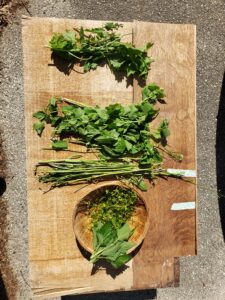
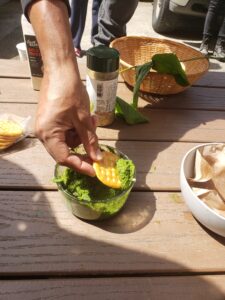
In the prior weeks, we’d spent time hiking, identifying and tasting plants, and discussing their various uses. In addition to learning which plants are edible, we discussed safety, theory, and ethics, such as taking only what you need and minding where you are. Most of the land in PA is privately held, and foraging on land without permission is illegal, so roadside foraging could easily turn into trespassing. Knowing the history of the land is also critical in minding exposure to potential toxins like heavy metals and plastics, especially in a post-industrial landscape such as Philadelphia.
Despite these challenges in access to foraging, the ability to find your own wild foods remains empowering. For our second trip, we investigated how to use wild plants in unexpected ways: using tree flowers to make floral syrups and wild yeasts found on pine needles to make a probiotic soda. Both of these recipes required time to mature before consuming, leading us into our final lesson where we shared a foraged meal together.
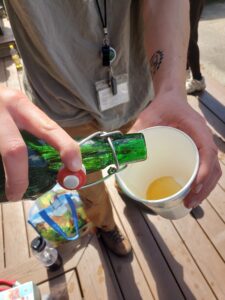
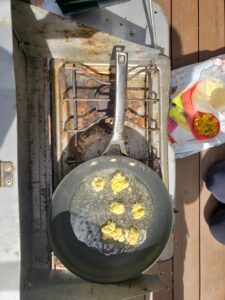
Dandelions battered in seasoned cornmeal and pan-fried into crispy fritters were served up hot alongside a flavorful pesto made from wild garlic cress, nettles, garlic mustard, dandelions, and knotweed. The concoction of pine needles, sugar, and water had transformed into an intriguing soda similar to birch beer. The mealtime conversation centered around the collective question, “How could I bring foraged foods into my everyday life?” Because while the experience was very new, it was also easy, almost free, and delicious.
